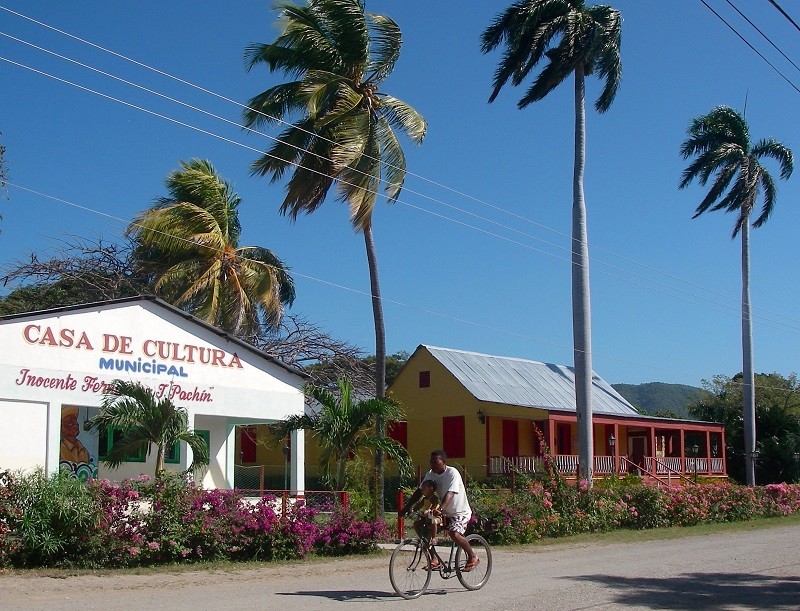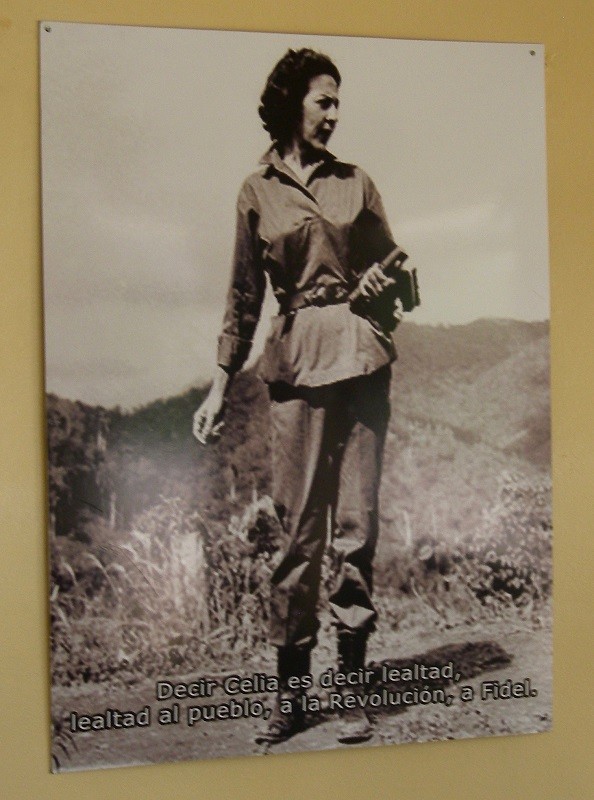Cuba’s National Flower: Celia Sanchez
By Jenny Cressman*

HAVANA TIMES – A true flower of Cuba’s revolution first took root in Media Luna, a town so named because the river curving through it emulates a half moon. Media Luna is located in the province now called Granma, named for the ship that brought Fidel Castro, Che Guevara and 80 others from Mexico to Cuba in 1956. At the time of this revolutionary flower’s birth, however, that eastern region of the island was still known as Oriente.
Born on May 9, 1920, Celia Esther Sánchez Manduley was one of eight children in the family of Dr. Manuel Sánchez Silveira and Acacia Manduley. She was primarily raised by her father, though, because her mother died when Celia was just six years old. After finishing high school, she began working very closely with her father in his practice, often traveling to isolated homes and communities to provide medical care, as well as assisting in his clinic. Through this experience, she learned to know many families in the rural, mountainous area surrounding Media Luna and Pilón, where she moved at age 20, with her father.
Celia’s knowledge of the local people and the Sierra Maestra mountains proved extremely advantageous when she joined the resistance movement that was developing in the early 1950s. Her exploits and accomplishments before, during and after Cuba’s revolution are well documented in books such as One Day in December: Celia Sánchez and the Cuban Revolution by Nancy Stout, Celia Sánchez: The Legend of Cuba’s Revolutionary Heart by Richard Haney and Celia Sánchez Manduley: The Life and Legacy of a Cuban Revolutionary by Dr. Tiffany A. (Thomas-Woodard) Sippial. An abundance of information about her life can also be found through Internet searches.

For example, you can find numerous references to her assisting her father in transporting a bust of José Martí (Jan. 28, 1853 – May 19, 1895) to the top of Pico Turquino, Cuba’s highest peak, although some accounts have conflicting details and dates. This 163-lb. effigy was created by Jilma Madera, the same woman who sculpted the Christ figure that overlooks the bay of Havana. The sculptor has said she contacted Dr. Sánchez about this project because he was a member of the Cuban Archaeology Association and knew the area. According to most sources, the mountain-top installation was likely done in 1952 or early ’53, in recognition of his centenary, when Celia would have been 32. It seems appropriate to mention that since, this year, she would have been 100 herself.
One of my favorite anecdotes about Celia is that she liked to collect jeeps and tanks – but it wasn’t a private hobby! While fighting with the guerillas in the Sierra Maestras, she used her knowledge of the terrain to aid in luring Fulgencio Batista’s forces toward swampy areas where the heavy vehicles would become mired, thus allowing the rebels to successfully conquer their opponents. To this day, I would imagine, much of that tank collection remains submerged in the swamps below La Comandancia de la Plata, the secret mountain headquarters of the rebel army.
The captured jeeps, along with others she helped secure, were used during different aspects of the revolution. Since she’d learned to drive while living in Pilón, she likely drove some of those jeeps herself. Later, in 1959 and beyond, when she would have had the means to drive a fancier vehicle, she still chose a cheap jeep.
Another story about Celia that never fails to affect me, whether I read or recount it, illuminates what motivated her to become a rebel fighter: her profound compassion for the people of Cuba, especially the children. One incident in particular incited her to step away from her privileged position in society and join the underground movement that sought to oust Bastista, the corrupt dictator who was backed by both the U.S. government and American Mafia.

By 1953, this brutal regime was firmly ensconced in Havana and they could do whatever they wanted. In catering to the needs of Mafia clients flocking to the city’s numerous casinos and hotels, Batista’s henchmen often kidnapped young women and girls to be used as disposable sex toys. A 10-year-old child named Maria Ochoa, whom Celia had known since helping at her difficult birth, became one of their victims. When Celia learned that her dear Maria had been cruelly raped to death and her little body left like garbage in the basement of a Havana hotel, she was so incensed that she made the decision to change her life. And, in doing so, she helped change the course of Cuba’s history.
Maria’s tragic kidnapping and murder culminated in August 1953. By this time, Fidel Castro and many other rebels were imprisoned, following their failed attack on the Moncada Barracks in Santiago de Cuba on July 26. Celia began working with the guerrillas and, by 1954, had made quite a name for herself, thus gaining the attention of both factions. Batista put a price on her head, ultimately offering a $75,000 (USD) bounty. Fidel began secretly communicating with her from jail, commending her resistance efforts and expressing his desire to meet her.
When Fidel was freed from prison in 1955, he immediately fled to Mexico. He returned in December 1956 but did not actually meet Celia until 1957, even though she had played a significant role in preparing for the Granma’s landing. If that arrival had gone as planned, she would have had jeeps waiting for him. When they did finally get together, they were effectively inseparable for the remainder of her life. If she was not beside him, she was usually nearby.
During one of his first key speeches upon triumphant arrival in Havana, she was there, in the wings. As he addressed their countrymen, to everyone’s amazement, a white dove flew down and rested on Fidel’s shoulder for several minutes, despite his animated movements. Celia saw dove as representing the spirit of Maria, her precious inspiration for helping to reshape Cuba. I find it interesting to note, as well, that “La Paloma” (the dove) was Fidel’s nickname for Celia.
He also referred to her as Cuba’s most “autochonthous” flower which, in the context, can be interpreted as authentic or true. I’m sure he loved her, and was her lover. It’s been said that the only time Fidel cried in public was at her funeral. Celia died of lung cancer on Jan. 11, 1980, and I’ve sometimes wondered if her death was a factor in the country’s research and development of cancer drugs. It would seem fitting. She was an advocate for the Cuban people and concerned about their well-being in many ways; perhaps her death spurred on some of Cuba’s medical achievements.
I see Celia Sánchez as a woman who was complex, remarkable and, indeed, a truly authentic national flower of Cuba. She bloomed brilliantly but left the world too soon.
—–
*NOTE: This is not intended to be a comprehensive biography about Celia Sánchez Manduley. It is simply the author’s reflections about some aspects of Celia’s early years, while she was living in Granma.
(Click on an image to display the gallery.)





It is interesting that Fidel Castro’s feelings for Celia Sanchez Manduley were such, that although he had fathered five sons with Dalia Soto de Valle, he did not marry her until after the death of Celia.